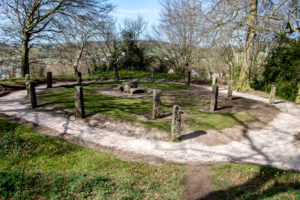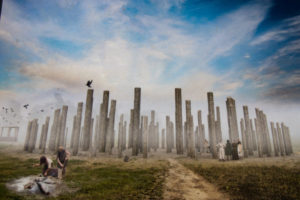Silbury Hill is a prehistoric artificial chalk mound near Avebury in the English county of Wiltshire. It is part of the Stonehenge, Avebury and Associated Sites UNESCO World Heritage Site. At 129 ft high, it is the tallest prehistoric man-made mound in Europe and one of the largest in the world; similar in size to some of the smaller Egyptian pyramids of the Giza Necropolis.
Silbury Hill is part of the complex of Neolithic monuments around Avebury, which includes the Avebury Ring and West Kennet Long Barrow. Its original purpose is still debated. Several other important Neolithic monuments in Wiltshire in the care of English Heritage, including the large henges at Marden and Stonehenge, maybe culturally or functionally related to Avebury and Silbury.
The first clear evidence of construction, dated to around 2400 BC consisted of a gravel core with a revetting curb of stakes and sarsen boulders. Alternate layers of chalk rubble and earth were placed on top of this: the second phase involved heaping further chalk on top of the core, using material excavated from a series of surrounding ditches which were progressively refilled then recut several meters further out. The step surrounding the summit dates from this phase of construction, either as a precaution against slippage or as the remnants of a spiral path ascending from the base, used during construction to raise materials and later as a processional route.







